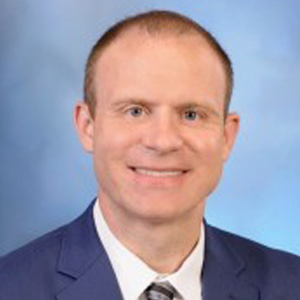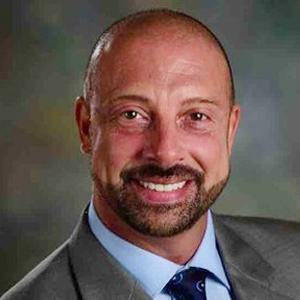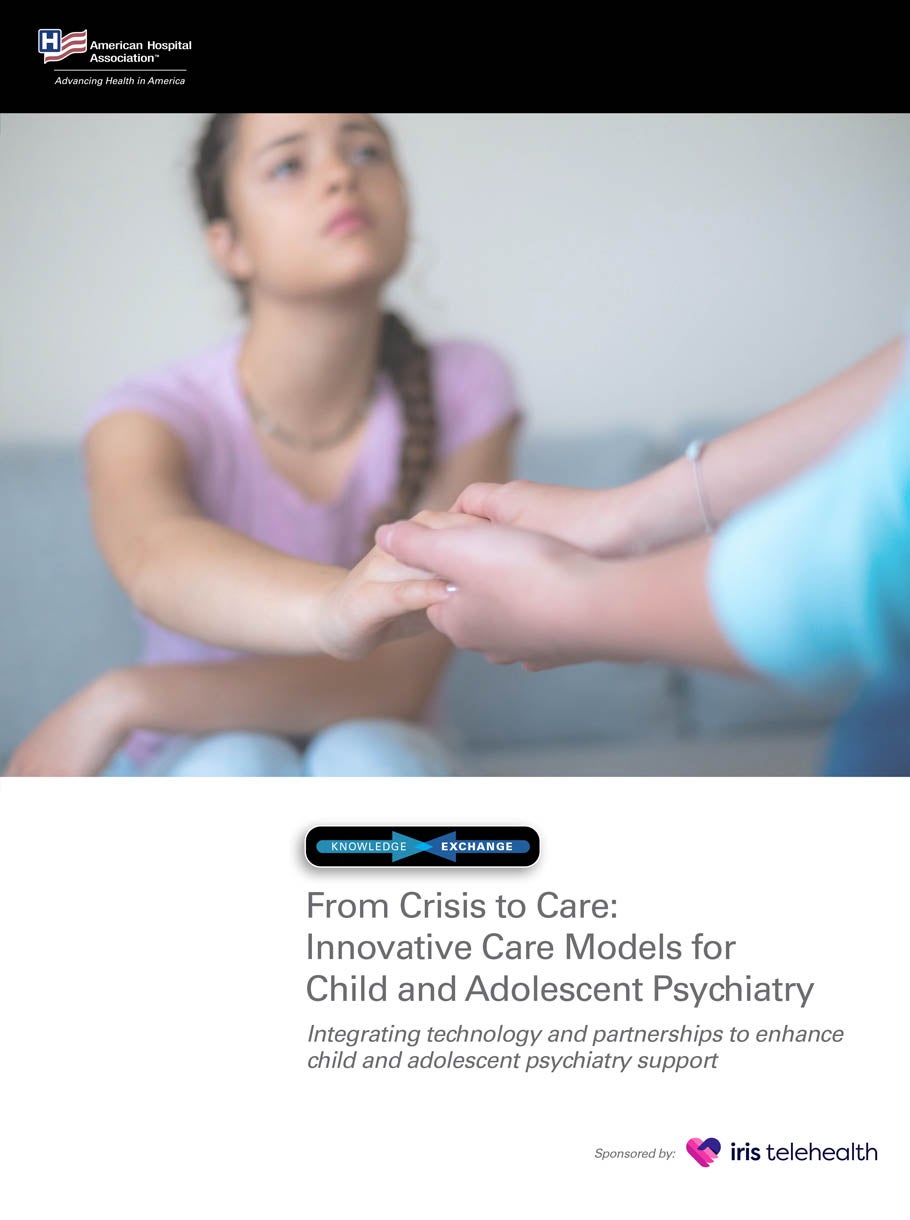AHA Knowledge Exchange
Integrating technology and partnerships to enhance child and adolescent psychiatry support
Child and adolescent behavioral health services are facing unprecedented demand, fueled by rising rates of anxiety, depression and behavioral issues among youth. At the same time, a nationwide shortage of child and adolescent psychiatrists is creating a critical bottleneck to timely, developmentally appropriate care. Health systems are under mounting pressure to bridge these access gaps and deliver comprehensive support to children, teens and their families. This Knowledge Exchange e-book explores how health care leaders are responding to these challenges by leveraging virtual care models and forging strategic partnerships to expand access, enhance outcomes, and build more resilient, sustainable behavioral health systems.
8 strategies to expand and strengthen behavioral health services for children and teens
- Expand behavioral health access by integrating services into primary care and schools, embedding clinicians across pediatric practices, campuses, mobile crisis units and virtual platforms. Equip school counselors, teachers and providers to identify early signs and refer promptly.
- Deploy telepsychiatry to bridge care gaps in rural and underserved areas, supported by 24/7 tele-assessment services that streamline emergency department (ED) triage and reduce unnecessary admissions. Offer flexible scheduling and design child-friendly platforms that actively engage parents and other caregivers.
- Mobilize crisis response and community collaboration. Activate crisis stabilization units and mobile response teams to deliver timely care. Build partnerships with shelters, juvenile justice centers and community organizations for a coordinated outreach.
- Streamline diagnostic and evaluation pathways. Develop fast-track protocols for psychiatric, substance use and attention-deficit/hyperactivity disorder screenings. Advocate for insurance coverage of psychological testing and reduce reliance on cash-only services. Centralize intake and triage to reduce wait times and improve throughput.
- Build and sustain a specialized workforce. Partner with academic institutions and telepsychiatry organizations to train providers in pediatric psychiatry, psychology, counseling, social work and telehealth. Leverage programs like the National Health Service Corps and graduate medical education to offer incentives for clinicians serving high-need areas.
- Strengthen care coordination and data sharing. Implement shared electronic health record systems and artificial intelligence tools to improve communication and documentation across care teams. Facilitate regular case conferences among pediatricians, psychiatrists, therapists and educators.
- Design financially viable models. Quantify cost savings from reduced ED admissions and centralized care. Use philanthropic and grant funding to pilot programs and demonstrate return on investment. Advocate for sustainable reimbursement models that support integrated behavioral health.
- Drive public awareness and policy change. Share patient and family stories to build empathy and support. Engage with state policymakers to strengthen Medicaid, broaden coverage and improve post-18 care transitions. Promote behavioral health as essential to youth well-being.
Participants

Rebecca Chickey, MPH
Senior Director, Behavioral Health
American Hospital Association

Jesselina Lovey Curry, M.D.
System Medical Director Behavioral Health
Luminis Health

Brittany Evans, DNP, APRN, PMHNP-BC, NEA-BC
Assistant Vice President, Patient Services, Psychiatry
Cincinnati Children’s Hospital Medical Center

Wanda Figueroa-Peralta, EdD, LCPC
President and CEO
RiverValley Behavioral Health Hospital

Andy Flanagan
CEO
Iris Telehealth

Matthew Fry, DHA, MHA, MBA, FACHE
President and CEO
Freeman Health System

Cynthia Grimm, LCSW
Director of Care Coordination
East Tennessee Children’s Hospital

Barbara Walczyk Joers, MHSA
President and CEO
Gillette Children’s Specialty Healthcare

Michael Johnson, M.D., MBA, CPE, FAAP
Chief of Medical and Outpatient Services, Chief Medical Officer
Bethany Children’s Health Center

Kalena Jones, DHSc
Director of Community Health Programs
Baptist Health

Tom Milam, M.D.
Chief Medical Officer
Iris Telehealth

Lionel Phelps II, Psy.D., LP
Vice President of Population Health
RiverValley Behavioral Health

Thomas Saggio, R.N., MSN, MHS, PMH-BC
Director of Behavioral Health Operations
St. Louis Children’s Hospital

Jared Vavroch, MHA
Senior Director, Strategic Services
Children’s Mercy Kansas City

Moderator:
Suzanna Hoppszallern
Senior editor, Center for Health Innovation
American Hospital Association
AHA Knowledge Exchange
Gain insights from the C-suite and health care leaders on the most pressing issues and transformational strategies.









